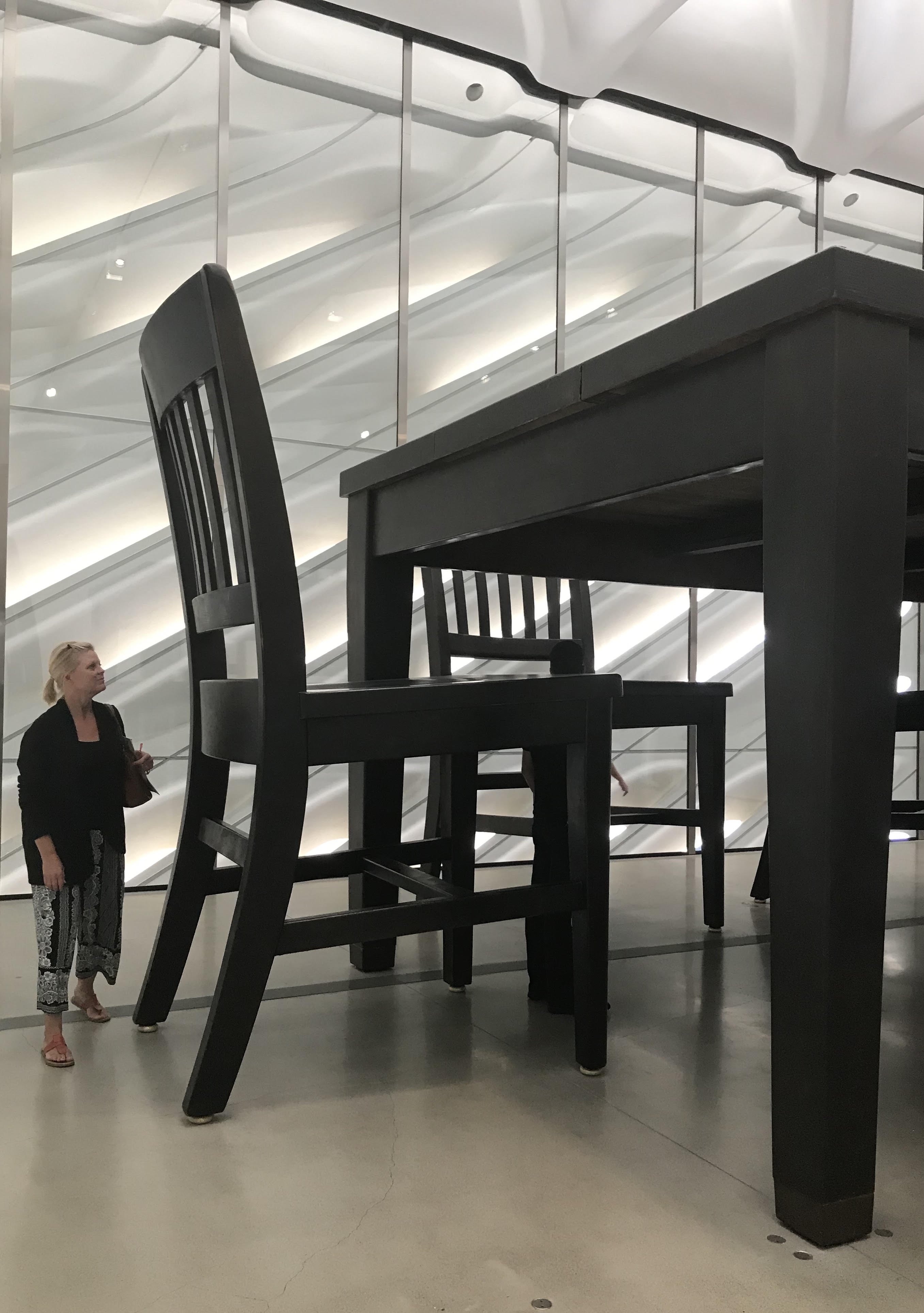
Robert Therrien’s installation entitled Under the Table (1994) at the Broad Museum in Los Angeles is a testimony to the power of “scale.” Scale is a term used by artists and designers to talk about the size of a particular object or element, usually in its relationship to the human body. Scale is an important factor in any composition. Therrien has taken a common everyday dining room set — table and chairs — and enlarged them approximately four times their normal size. Like a young child or small household pet, the visitor is allowed to walk beneath and around these monumental objects. The experience momentarily changes our relationship to the world. The ubiquitous nature of these common objects keeps the experience from solely being about the artist’s personal vision and rather taps into our collective memories.
Therrien lived and worked in California and passed recently at age 71 (June 2019). He was a contemporary of Claes Oldenburg, who worked on the other coast and also supersized common everyday objects. Oldenburg, however, appeared to be interested in those objects that would eventually lose their collective meaning and become, to the casual observer, an abstract composition. Oldenburg also focused most of his career on public art commissions, unlike Therrien’s body of work, which resides in traditional art venues such as galleries and museums. While Oldenburg’s work emphasizes the object, Therrien’s work fashions a more immersive experience. The scale of the negative spaces created by the objects — the spaces the visitor occupies — is just as important as the object itself.
